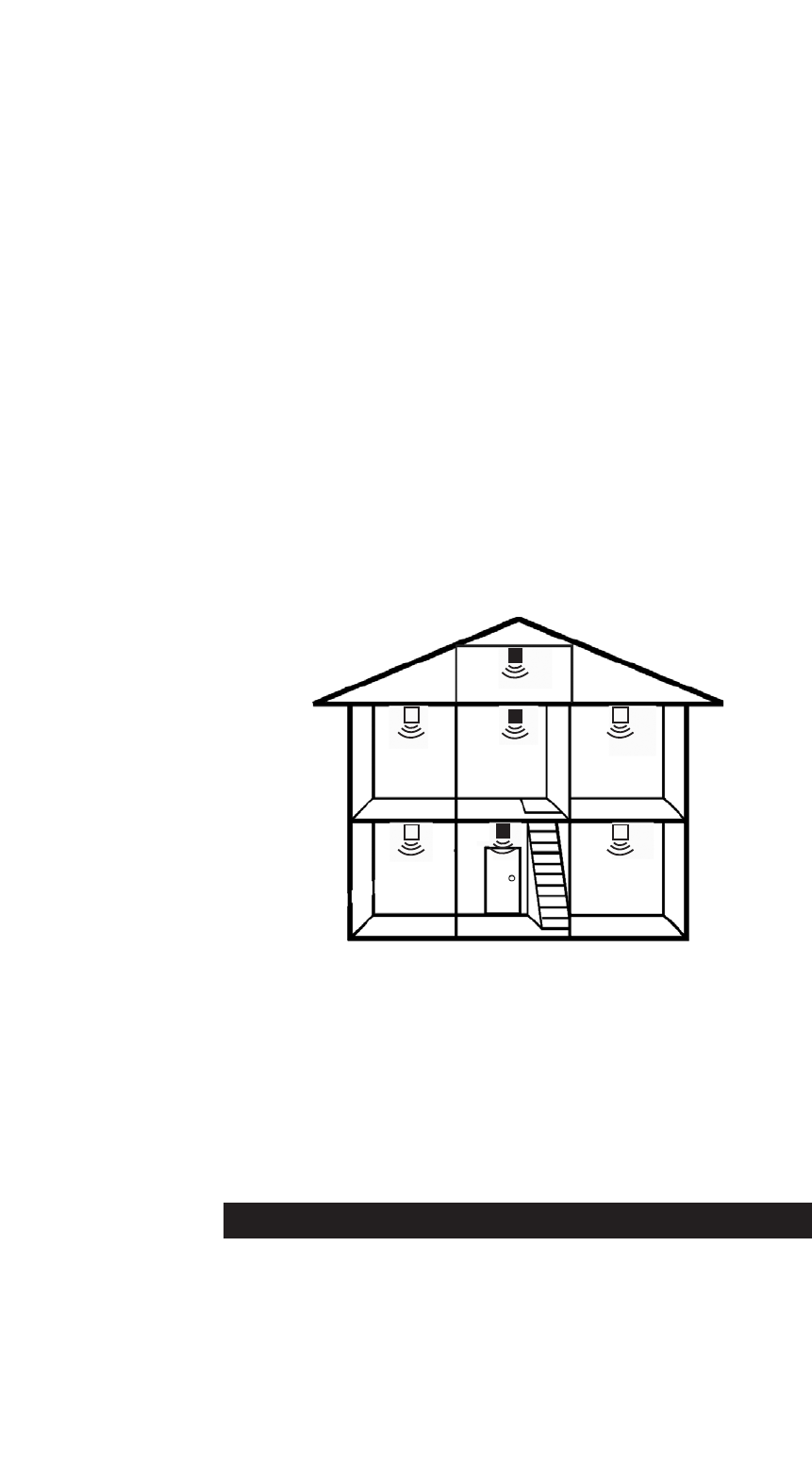
3.2 Multi Storey Dwellings
If your home has more than one floor, at least one alarm should
be fitted on each level (see figure 4). The Ei3105RF/Ei3100RF
Wireless Smoke Alarm is ideal in this situation as they are
automatically interconnected without wiring.
3.3 Recommended Protection
Fire authorities recommend you put individual Smoke Alarms
in or near all the rooms where fire is most likely to break out
(apart from the locations to avoid, mentioned below). The liv-
ing room is the most likely place for a fire to start at night, fol-
lowed by the kitchen and then the dining room. You should
also consider putting Smoke Alarms in any bedrooms where
fires might occur, for instance, where there is an electrical
appliance such as an electric blanket or heater, or where the
occupant is a smoker. You could also consider putting Smoke
Alarms in any rooms where the occupant is unable to respond
very well to a fire starting in the room, such as an elderly or
sick person or a very young child.
Figure 4: Multi Storey Dwelling
3.4 Checking you can hear your Smoke Alarms
With the Smoke Alarms sounding in their intended locations,
check you are able to hear them in each bedroom with the
door closed, above the sound of your Audio/TV Systems. The
Audio/TV systems should be set to a reasonably loud conver-
sation level. If you can’t hear it over your radio the chances
are that it wouldn’t wake you. This Wireless Smoke Alarm will
help to ensure the alarm will be heard through-out the house.
4. POSITIONING YOUR SMOKE ALARM
4.1 On a ceiling
Hot smoke rises and spreads out, so a central ceiling position
is the recommended location. The air is “dead” and does not
move in corners, therefore Smoke Alarms must be mounted
away from corners. Place the unit at least 0.30m from any
light fitting or decorative object which might obstruct smoke
5


















